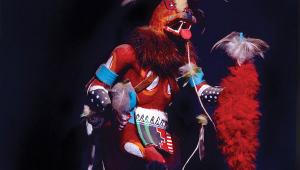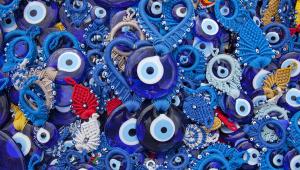Solving Lighting Challenges
A Color Temp And Setup Sampler
Lighting portrait subjects with different hair and skin color can be a challenge, especially when you are using a dark background. With a little time spent adjusting the color temperature and placement of your lights, you won’t have to rely on color correcting the images later. No lighting challenge is too extreme if you break it down into a few simple steps. Do you want hair lighter or darker; do you want to complement or contrast the skin tone; and what is the overall “look” you desire—warm or cold? By answering these questions, you will be able to determine which color temperature of light you need to create the mood for the image. Again, don’t just set the camera on auto white balance. Set your daylight or tungsten balance lights accordingly and manually adjust the camera’s color temperature—you’ll be glad you did.
Light Skin, Blonde Hair
(#1) Because of her dark top, pale skin tone and yellow hair, Steph is a walking reflector. Any light pointed at her will radiate outward. The warm hue of a tungsten balanced light on her hair will make it even more blonde. If the same type of light were added to her face, it would make her skin too red or ruddy. Instead, use daylight balanced illumination on her skin (a blue cast) to cool the color temperature. Balancing the camera to 4500º K will allow the tungsten light on Steph’s hair to remain warm while keeping her flesh cooler. Here we achieve a happy balance mixing both daylight and tungsten illumination.
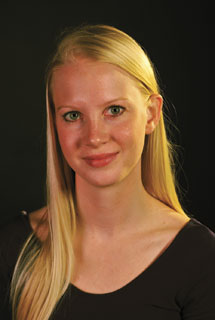 |
|
|
Nikon D3x, 24–70mm lens, f/5.6, 1/60th, white balance manual (4500ºK), ISO 400.
Fair Skin, Red Hair
(#2) Jess has natural flaming red hair but shares the same fair skin tone as Steph. Also wearing a black top against a black background, Jess posed the same difficulty as Steph. Using a tungsten balanced hair light to make Jess’s red hair even more so, I also chose tungsten as her key light. Because her red hair is such a strong contrast to her lighter skin tone, I believe using a daylight balanced light would have made her too blue. By keeping everything in the tungsten world, the challenge was minimized. It’s still critical to use three point lighting because subjects wearing black must stand out from a black backdrop. With some light spilling onto the subject’s shoulders you will have the separation you desire. Even if Jess’s skin tone moved slightly closer to the red side, that would not be an issue because of her vibrant hair.
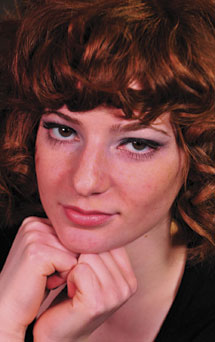 |
|
|
Nikon D3x, 24–70mm lens, f/5, 1/60th, white balance manual (3400ºK), ISO 400.
Black Hair, Light Complexion
(#3 and #4) Rhianna has raven black hair and a white complexion and tungsten would have created the opposite effect I desired. Using a tungsten backlight gelled with full color temperature blue (CTB), I essentially had a daylight balanced light. This would add cooler blue rather than warm red highlights to her locks. The LED key light was dialed to 5600º K and cast a cool blue hue to her face—if too blue you achieve the opposite. Wanting to see if adjusting the key light to tungsten would change the look, I kept the color temperature setting on my camera to daylight and dialed in 3400ºK on the key. The result (#4) is still somewhat subtle but her flesh tones are much warmer. If the camera were set to tungsten balance, Rhianna’s face would have been too red.
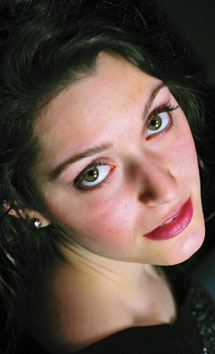 |
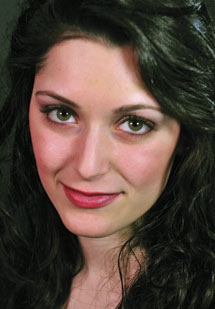 |
||
|
|
Nikon D3x, 24–70mm lens, f/5.6, 1/40th, white balance manual (5600ºK), ISO 400.
Dark Complexion, Dark Hair
(#5) For this photo Kenesha, who has very dark skin, I used a Rosco #99 warm brown gel. This gel makes darker skin tones warmer, especially when used with tungsten light. She would have looked fine with just tungsten lighting, but adding the gel makes her skin pop.
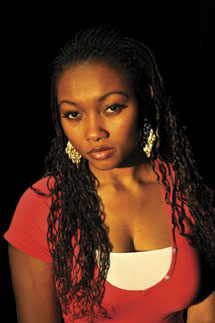 |
|
|
Nikon D700, 24–120mm lens, f/5, 1/50th, white balance manual (3200ºK), ISO 400.
White Beard, Gray Hair, Warm Complexion
(#6) Wayne was the most difficult situation with his snow white beard and graying hair. Having a warm complexion, it took a lot of trial and error to select the best color temperature. Illuminating his hair with a gelled tungsten back light, moving the camera left, fill almost directly facing him, and positioning the daylight balanced key camera right, I set the camera to daylight balance (5600ºK). The blue cast also highlights the character lines of wisdom in his face (wasn’t that a nice way of putting it?).
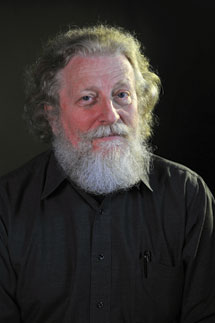 |
|
|
Nikon D3x, 24–70mm lens, f/5.6, 1/40th, white balance manual (5000ºK), ISO 320.
Chuck Gloman is the program director of the TV/Film Department as well as a member of the faculty at DeSales University. He may be reached at chuck.gloman@desales.edu.






